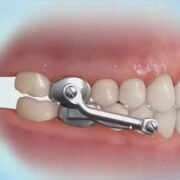During the early stages of Dupuytren’s Contracture, the patient may not experience too many issues. As the condition starts as a small lump or nodule on the palm that is painless and doesn’t affect the hand or fingers’ function, it is often ignored by the sufferer.
Dupuytren’s Disease is progressive, so as it develops, the symptoms become worse and worse; a cord develops from the nodule to the joints in the fingers. When these cords tighten, they cause the finger to bend into the palm of the patient’s hand. This bending or contraction prevents the straightening of the affected finger and makes using the hand difficult, almost impossible in some instances.
When suffering from Dupuytren’s Contracture, the patient will find it difficult to perform simple tasks like washing dishes, writing, typing, and even carrying groceries.
As the infected finger can’t be straightened, grabbing items is not possible. In the majority of instances, the patient will not suffer from any pain; however, this can change depending on the severity of the condition. The pain can be excruciating, especially when attempting to straighten the affected finger.
The condition can cause a few issues for the patient, mainly the loss of regular use of the infected hand. This loss of movement can cause extreme frustration, which can lead to stress.
Another problem is the patient becoming depressed because they have an unusual growth on their hand and are embarrassed by the condition. People are afraid of ridicule from others who see the lump. In extreme cases, the patient may have to go to therapy to help deal with the depression.

What causes Dupuytren’s Contracture?
The unfortunate thing about Dupuytren’s Contracture is there is no actual cause of the condition. Certain factors will cause the disease to develop more aggressively. The factors are due to a chemical imbalance in the patient. Those who suffer from diabetes will often see more aggressive versions of Dupuytren’s Contracture than those who are diabetes-free.
The insulin used to treat diabetes may be the cause of this aggressive reaction of the condition. Those who suffer from thyroid issues are also more likely to suffer from the disease; thyroid issues are treated with hormones; these may be what aggravates the condition. Liver disease sufferers also have more aggressive versions of Dupuytren’s Contracture. The medication used to treat seizure conditions, like epilepsy, also directly affects the disease’s state.
Who is susceptible to Dupuytren’s Contracture?
No one is immune to Dupuytren’s Contracture; however, it is more common in Caucasians than any other race. The condition is seen in people of European descent more so than any other. This is linked back to the Vikings who spread the disease throughout Northern Europe as they conquered the area. The disease was so prevalent in the Vikings that it is also known as Vikings Disease.
Men are more likely to have the condition than women, and it also affects people over 40 more than other age groups. Smoking cigarettes and drinking alcohol also have an impact on the disease’s severity. There is also a connection between the diet that a patient eats and the aggressive nature of their Dupuytren’s Disease.
How can the disease be treated?
The most common Dupuytren’s Contracture treatment is an operation. The physician surgically removes the hardened tissue in the hand. An incision is made across the hand, and the tissue is cut out. Although surgery is the most common form of treatment, it does not prevent the condition from returning. The patient will also have to go through a few physiotherapy sessions to help speed up recovery from a Dupuytren’s Contracture surgery.
Patients will also be given a collagenase injection to break down the infected tissue and allow movement to return to normal. The injection will allow the action in the fingers to return back to normal as the tissue breaks down and releases the cords. Injections, however, can cause some issues, such as pain at the site of the injection, bleeding, swelling, and numbness. Just like surgery, this Dupuytren’s Contracture treatment does not eliminate the condition altogether, and it is common for it to return.
If you are looking for a non-surgical treatment for Dupuytren’s Contracture that doesn’t involve any injections, then you should invest in the Dupuytrens Wand. The Dupuytrens Wand will allow the patient regular use of the fingers after only a few uses.
The wand breaks down the hardened tissue, releasing the contracture that is pulling on the finger joints. The wand can be found at dupuytrencure, along with the Dupuytren Tape, which should be applied after you have massaged the hand. This treatment has no side effects and can be used repeatedly on any instances of the condition. The ease of use and excellent price make this the best non-surgical treatment for Dupuytren’s Contracture available on the market.
Research contributions credited to Sadia shahid MA Industrial Biotechnology, Atta-ur-Rahman School of Applied Biosciences, National University of Science and Technology, Islamabad; Fatima Nasir MA healthcare Biotechnology, Atta-ur-Rahman School of Applied Biosciences, National University of Science and Technology, Islamabad; Dr. Madiha Khalid Clinical Pharmacist, M. Phill. clinical pharmacy Pakistan, Jeremy Madvin, MBA International Business, University of Redlands, Redlands, Ca.














Comments